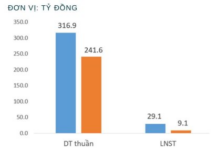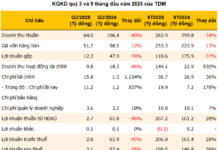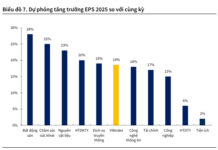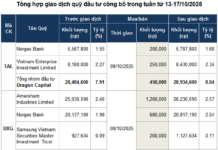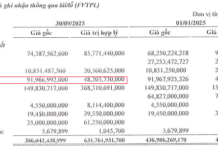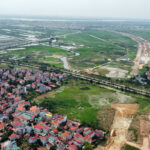The Ministry of Construction’s recent report to the Government Office regarding the surge in real estate and commercial housing prices in major cities includes calculations that attribute the rise in property prices to the recent fluctuations in land-related costs and the implementation of new calculation methods and land price tables.
According to the Ministry, one of the most significant changes in the 2024 Land Law is the replacement of the old land price framework with an annually updated land price table that more closely aligns with market values, taking into account factors such as purpose, duration of land use, input information, and other influencing elements.
The Ministry of Construction predicts that the new land price table, which is closer to market prices, will increase land-related costs, including land clearance, compensation for land revocation, and taxes and fees related to land. These costs account for 7-20% of the total project cost for high-rise apartment projects and 25-50% for villa and adjacent projects, with land use fees making up a significant proportion of the total cost of housing projects. These figures vary depending on the project’s location and the convenience of technical infrastructure.
The application of the 2024 land price table has led to a significant increase in land use fees for projects, as demonstrated by the example of the GP Invest residential area, where the land use fee calculated per square meter of apartment sales price has risen to 22 million VND/36 million VND (approximately 60%). The current ratio is about 42%, equivalent to 15 million VND/36 million VND.

Rising real estate and housing prices in major cities. Photo: Hoang Ha |
A similar trend is observed in the Dong Tang Long urban area in District 9, Ho Chi Minh City, where the proportion of land use fees in the selling price per square meter of apartments is expected to increase from 27% (2.3 million VND/8.8 million VND) to 60-65%.
This proportion also increased in the Binh Duong Chanh My Villa project, from 16.3% to about 50%, and in the Thanh Lam – Dai Thinh 2 project in Hanoi, where land use fees rose from 15% to 33% of the selling price.
The Ministry of Construction calculates that the increase in the land price table could have a cascading effect, triggering a 15-20% rise in the real estate and housing price level compared to before.
In recent times, local governments have issued new land price tables or proposed tables with adjustments higher than previous ones. For instance, the new land price table in Ba Ria- Vung Tau province reflects a 20-30% increase compared to the old one, with a minimum of 513,000 VND/m2 and a maximum of 78 million VND/m2.
In Hai Duong, the new land price table shows prices twice as high as the old one, reaching a maximum of 190 million VND/m2.
At the end of July, Ho Chi Minh City proposed a draft land price table with adjustments, indicating a general upward trend of 5-10 times the current prices in many areas, and some suburban and peripheral areas expected to adjust prices by 15-50 times (excluding the K factor adjustment coefficient of 3.5 times). However, the city has postponed the application of this adjusted land price table to carefully consider various factors.
|
The Ministry of Construction has requested that the Ministry of Natural Resources and Environment monitor and consolidate the situation of issuing land price tables by localities according to the 2024 Land Law to evaluate its impact on the land price level. Based on this evaluation, timely propose solutions and measures to limit the negative impact of the new land price tables issued by localities on the housing and land price level and the supply and demand of the local market. |
Hong Khanh
The Home-Buying Dream: Is It Draining the Youth’s Energy and Finances?
The soaring property prices in major cities, particularly in Hanoi and Ho Chi Minh City, have reached unprecedented heights, far outpacing the affordability of many workers based on average income. Home ownership has become an elusive dream for countless young people.
The New Auctioned Land in Hanoi: A Post-Cancellation Opportunity?
The 32 land lots offered by Me Linh District, Hanoi, for auction witnessed a thrilling bidding war, with the highest successful bid reaching an impressive 48.9 million VND per square meter, almost double the starting price. The intense interest in these lots is a testament to their desirability, with even the lowest successful bid standing at a substantial 33.3 million VND per square meter.
The Capital City Adjusts Flooding Issues into Land Price Determinants
The Hanoi government has outlined eight specific factors that influence land prices, including water and electricity supply and their impact on drainage. This takes into account the stability of water and electricity provision and the area’s propensity for flooding during heavy rainfall.














